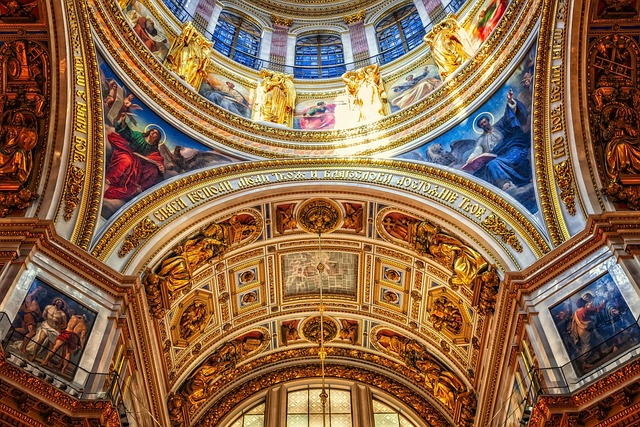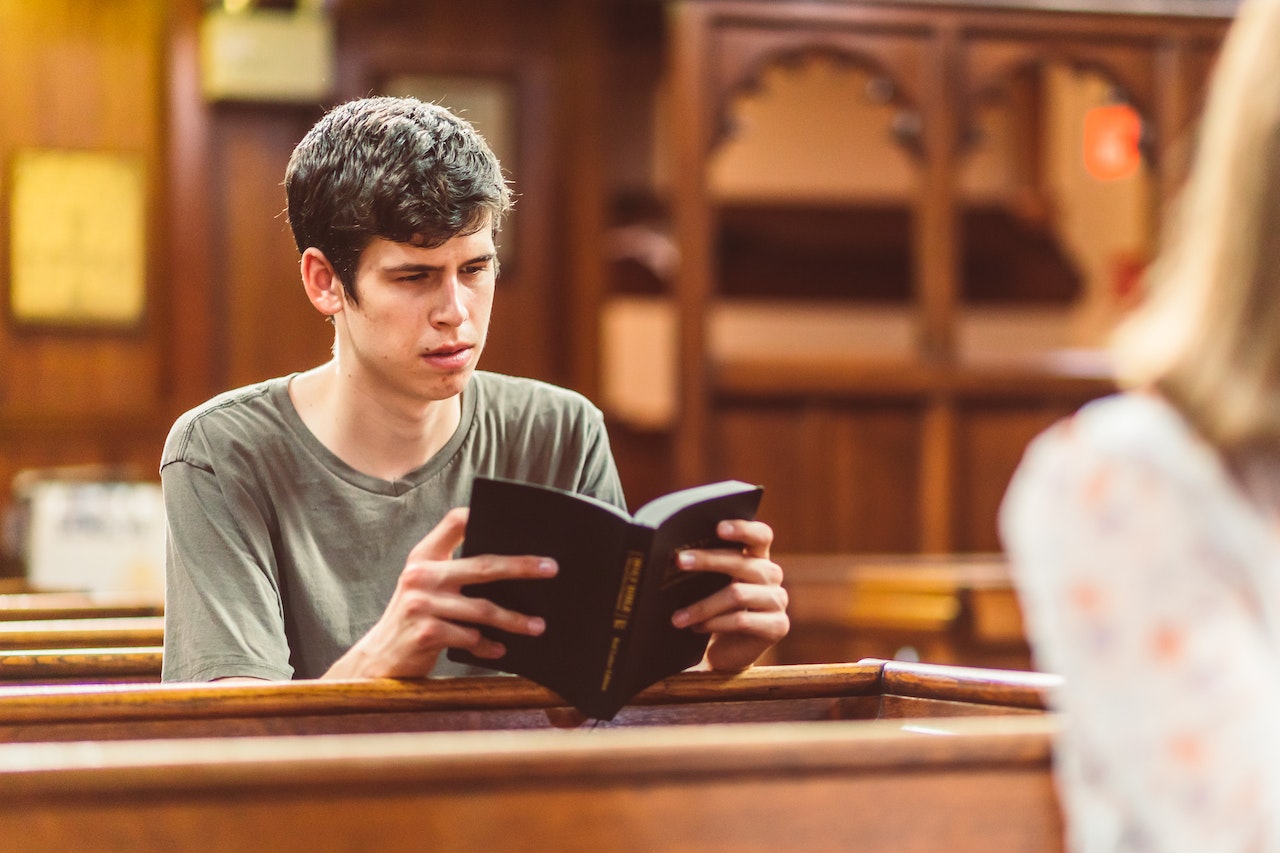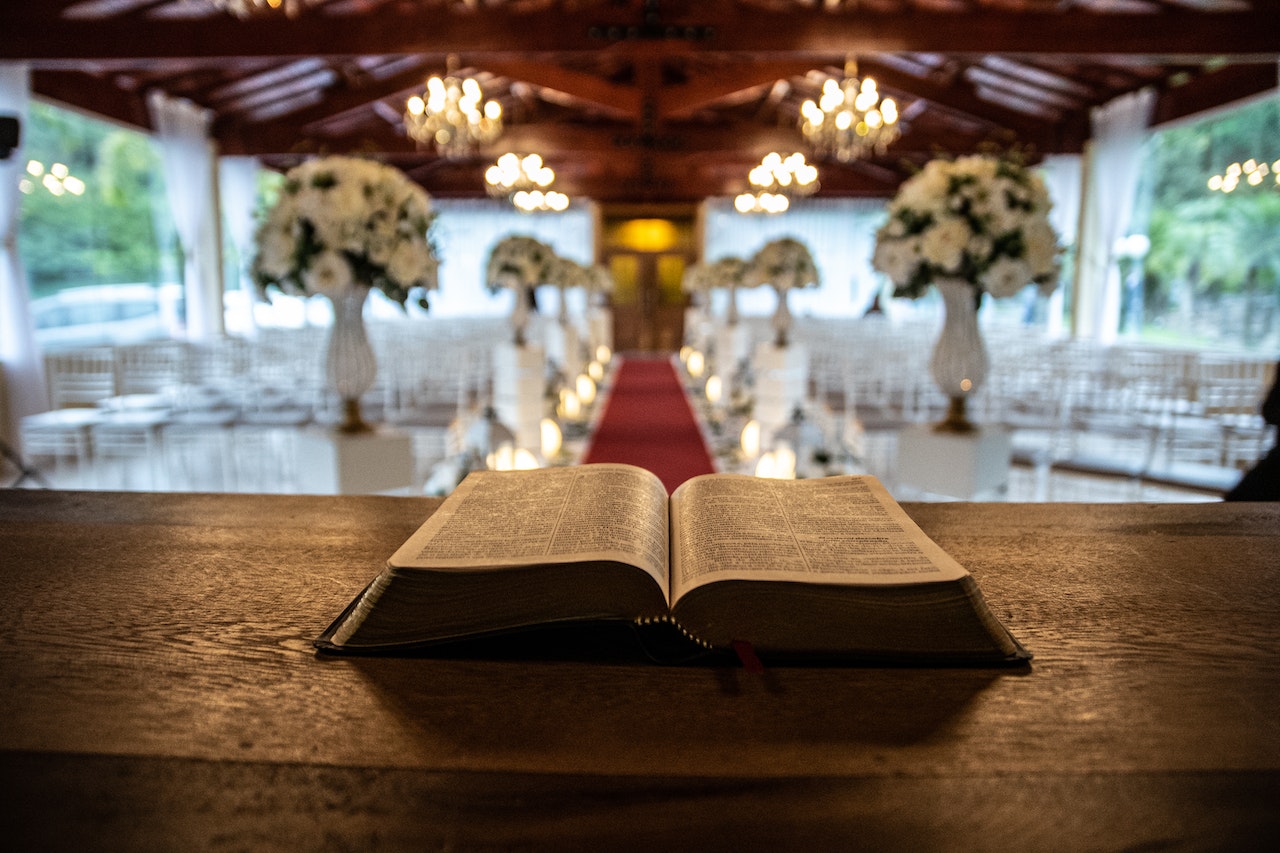Orthodox icons are an integral part of the religious and cultural traditions of the Eastern Orthodox Church. These sacred images hold great significance and are believed to serve as windows into the divine realm. One important aspect of displaying Orthodox icons is determining the direction in which they should face. This question has been a subject of debate and varying practices within the Orthodox Church. In this article, we will explore the different perspectives and considerations regarding which way Orthodox icons should face.
Table of Contents
The Significance of Icon Orientation in Orthodox Worship
Orthodox Christianity is known for its rich tradition of using icons in worship. These religious images, often painted on wood or written on canvas, hold a special place in the hearts of Orthodox believers. They are not mere decorations, but rather windows into the divine. Icons are venerated and treated with great reverence, as they are believed to be a means of connecting with the spiritual realm.
One aspect of iconography that is often debated among Orthodox Christians is the orientation of icons. Should they face the viewer, or should they face the altar? This question may seem trivial to some, but it holds great significance in Orthodox worship.
Traditionally, icons in Orthodox churches are placed on the iconostasis, a screen or wall that separates the sanctuary from the nave. The iconostasis is adorned with various icons, each depicting a different saint or biblical scene. These icons are arranged in a specific order, with the most important ones placed in the center.
The orientation of these icons is carefully considered. In Orthodox theology, the altar is seen as the dwelling place of God. It is the holiest part of the church, where the Eucharist is celebrated. Therefore, it is believed that icons should face the altar, as a sign of reverence and respect for the divine presence.
When icons face the altar, they are seen as looking towards God. They are seen as participating in the worship and directing their gaze towards the heavenly realm. This orientation also symbolizes the unity of the Church, as all the saints depicted in the icons are united in their worship of God.
On the other hand, some argue that icons should face the viewer. They believe that icons should be accessible and relatable to the worshipper. By facing the viewer, icons are seen as inviting the viewer into a personal encounter with the divine. This orientation emphasizes the idea that God is present and accessible to all, regardless of their position in the church.
While both perspectives have their merits, the majority of Orthodox churches adhere to the tradition of facing icons towards the altar. This practice has been passed down through generations and is deeply rooted in the Orthodox faith. It is seen as a way of preserving the sacredness of the altar and maintaining the proper order of worship.
However, it is important to note that the orientation of icons is not a dogmatic issue in Orthodox Christianity. It is a matter of tradition and personal preference. Some churches may choose to face icons towards the viewer, especially in areas where the Orthodox faith is less established.
In the end, the significance of icon orientation lies in its ability to foster a sense of reverence and connection with the divine. Whether icons face the altar or the viewer, they serve as a reminder of the spiritual reality that transcends our earthly existence. They invite us to enter into a deeper relationship with God and the saints, and to participate in the worship of the Church.
So, the next time you visit an Orthodox church, take a moment to observe the orientation of the icons. Reflect on the significance behind their placement and let them guide you into a deeper understanding of the Orthodox faith. Whether they face the altar or the viewer, these icons are a testament to the beauty and richness of Orthodox worship.
Historical Perspectives on the Direction of Orthodox Icons

Orthodox icons have been an integral part of the Eastern Orthodox Christian tradition for centuries. These sacred images, often painted on wood or created using other materials, are revered as windows into the divine. They depict various saints, biblical scenes, and important moments in Christian history. However, one question that has sparked much debate among Orthodox believers is the direction in which these icons should face.
To understand the historical perspectives on this matter, we must delve into the rich tapestry of Orthodox tradition. In the early centuries of Christianity, icons were primarily used for private devotion in the homes of believers. They were placed on walls or in special icon corners, serving as a constant reminder of God’s presence in their lives. During this time, there was no strict rule regarding the direction in which icons should face.
As the Byzantine Empire embraced Christianity and the influence of the Church grew, icons began to play a more prominent role in public worship. Churches were adorned with these sacred images, and their placement became a matter of great importance. The prevailing belief was that icons should face the altar, where the Eucharist was celebrated. This direction symbolized the connection between the earthly realm and the divine, with the altar serving as the focal point of worship.
However, as the centuries passed, different opinions emerged regarding the proper direction for icons. Some argued that icons should face the congregation, allowing worshippers to engage with the images directly. This perspective emphasized the communal aspect of worship and the idea that icons should be accessible to all believers. Others believed that icons should face the east, the direction associated with the rising sun and the Second Coming of Christ.
These differing viewpoints led to lively debates within the Orthodox Church. Some argued that the direction of icons should be determined by the specific context in which they were placed. For example, icons in a church’s narthex, or entrance area, might face the congregation to welcome worshippers. On the other hand, icons in the sanctuary, where the Eucharist is celebrated, would face the altar.
Despite these debates, it is important to note that the direction of icons has never been a dogmatic issue in the Orthodox Church. The focus has always been on the spiritual significance of these sacred images rather than their physical orientation. Icons are seen as windows into the divine, regardless of the direction in which they face.
In modern times, the question of icon direction continues to be a topic of discussion among Orthodox believers. Some churches adhere to the traditional practice of facing icons towards the altar, while others choose to face them towards the congregation. Ultimately, the decision is left to the discretion of the local parish and its clergy.
In conclusion, the historical perspectives on the direction of Orthodox icons reveal a rich tapestry of beliefs and practices. While some argue for icons facing the altar, others advocate for facing the congregation or the east. However, it is important to remember that the spiritual significance of icons transcends their physical orientation. Icons are windows into the divine, inviting believers to connect with the sacred in their own unique way.
Symbolism and Meaning Behind the Placement of Orthodox Icons
Orthodox icons are an integral part of the religious and cultural traditions of the Eastern Orthodox Church. These sacred images are not mere decorations but hold deep spiritual significance for believers. One aspect that often sparks curiosity and debate is the direction in which these icons should face. Should they face the viewer or face towards the altar? To understand the symbolism and meaning behind the placement of Orthodox icons, let’s delve into this fascinating topic.
In the Orthodox tradition, icons are considered windows into the divine realm. They are believed to be a means of connecting with the heavenly realm and the saints who have gone before us. As such, the placement of icons is carefully considered to enhance the spiritual experience of the faithful.
Traditionally, icons in Orthodox churches are placed on the iconostasis, a screen or wall that separates the sanctuary from the nave. This screen is adorned with various icons, each with its own significance and purpose. The central icon, known as the “Deisis,” typically depicts Christ enthroned, flanked by the Virgin Mary and John the Baptist. This arrangement symbolizes the intercession of the saints on behalf of humanity.
When it comes to the direction in which these icons face, there are differing practices among Orthodox churches. Some churches have the icons facing towards the altar, while others have them facing towards the congregation. Both orientations have their own symbolic meanings.
In churches where the icons face towards the altar, the emphasis is on the heavenly realm. The icons are seen as looking towards the altar, where the Eucharist is celebrated, symbolizing the presence of Christ. This arrangement reminds the faithful that the ultimate focus of worship is on God and the heavenly kingdom. It also serves as a reminder that the saints depicted in the icons are interceding on behalf of the congregation.
On the other hand, in churches where the icons face towards the congregation, the emphasis is on the community of believers. The icons are seen as looking towards the people, symbolizing the presence of the saints among the faithful. This arrangement highlights the communal aspect of worship and the belief that the saints are actively involved in the lives of the believers.
It is important to note that the direction in which icons face is not a matter of doctrine but rather a matter of tradition and local custom. The placement of icons can vary even within the same jurisdiction or region. Ultimately, the decision on which way the icons face is left to the discretion of the local bishop or priest.
Regardless of the direction in which icons face, their purpose remains the same – to facilitate a connection between the earthly and heavenly realms. They serve as reminders of the presence of God and the saints in the lives of believers. Whether facing towards the altar or the congregation, icons are meant to inspire and guide the faithful in their spiritual journey.
In conclusion, the placement of Orthodox icons holds deep symbolism and meaning. Whether facing towards the altar or the congregation, these sacred images serve as windows into the divine realm. They remind believers of the intercession of the saints and the presence of God in their lives. While there may be differing practices among Orthodox churches, the ultimate goal remains the same – to foster a deeper connection with the divine through these sacred icons.
Controversies and Debates Surrounding the Proper Orientation of Orthodox Icons
Orthodox icons have long been a source of fascination and reverence for believers and art enthusiasts alike. These religious images, often painted on wood or other materials, are considered sacred and are used as aids in prayer and meditation. However, one question that has sparked much debate among Orthodox Christians is the proper orientation of these icons. Should they face the viewer or face the altar?
This controversy stems from differing interpretations of the purpose and symbolism of icons. Some argue that icons should face the viewer, as they are meant to be a visual representation of the divine. By facing the viewer, the icon is seen as a direct connection between the worshipper and the divine presence. This perspective emphasizes the personal and individual nature of one’s relationship with God.
On the other hand, there are those who believe that icons should face the altar. This viewpoint is rooted in the belief that icons are not mere works of art, but rather windows into the heavenly realm. By facing the altar, the icon is seen as directing the viewer’s gaze towards the sacred space where the Eucharist is celebrated. This perspective emphasizes the communal and liturgical nature of Orthodox worship.
The debate over the proper orientation of icons is not a new one. It has been a topic of discussion among theologians, clergy, and laity for centuries. In fact, the issue was addressed at the Seventh Ecumenical Council in 787 AD, where it was decreed that icons should be venerated and displayed in churches. However, the council did not specifically address the question of their orientation.
Despite the lack of a definitive ruling, different traditions and practices have emerged over time. In some Orthodox churches, icons are placed on the iconostasis, a screen or wall that separates the sanctuary from the nave. In these cases, the icons typically face the altar, symbolizing their role in directing the worshipper’s attention towards the divine mysteries.
In other churches, icons are displayed on the walls, facing the congregation. This practice is often seen in Western countries where Orthodox communities are smaller and may not have the resources or space for a traditional iconostasis. In these cases, the icons are seen as a visual reminder of the presence of the divine in the midst of the worshiping community.
Ultimately, the question of which way icons should face is a matter of personal and communal preference. While some may feel a deep connection to the tradition of facing the altar, others may find comfort and inspiration in the direct gaze of the icon. What is important is not the direction in which the icon faces, but rather the spiritual significance it holds for the individual and the community.
In the end, the controversy surrounding the proper orientation of Orthodox icons is a reminder of the richness and diversity within the Orthodox tradition. It is a testament to the ongoing dialogue and exploration of faith that continues to shape and inform the practices of believers. Whether facing the viewer or facing the altar, icons remain a powerful and sacred expression of Orthodox spirituality.
Conclusion
The direction in which Orthodox icons should face is a matter of tradition and symbolism. The general practice is to have icons facing towards the east, representing the direction of the rising sun and the coming of Christ. This orientation is believed to symbolize the hope and anticipation of the Second Coming. However, there may be variations in specific circumstances or personal preferences. Ultimately, the decision on which way Orthodox icons should face is left to the discretion of the individual or the guidance of the church.
For licensing reasons, we must provide the following notice: This content was created in part with the help of an AI.


